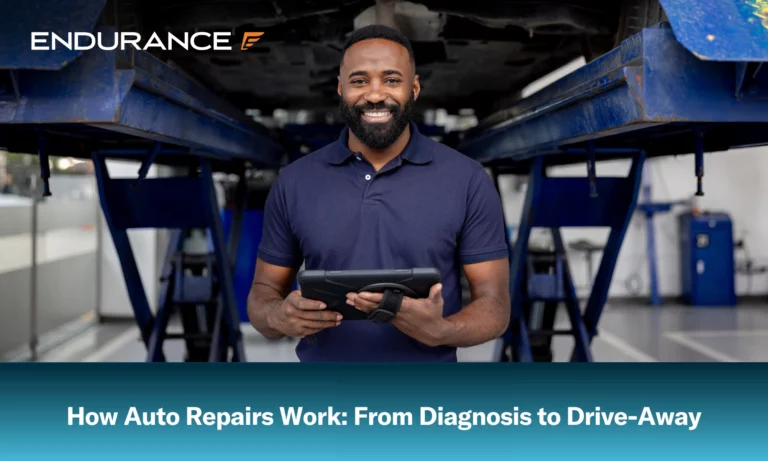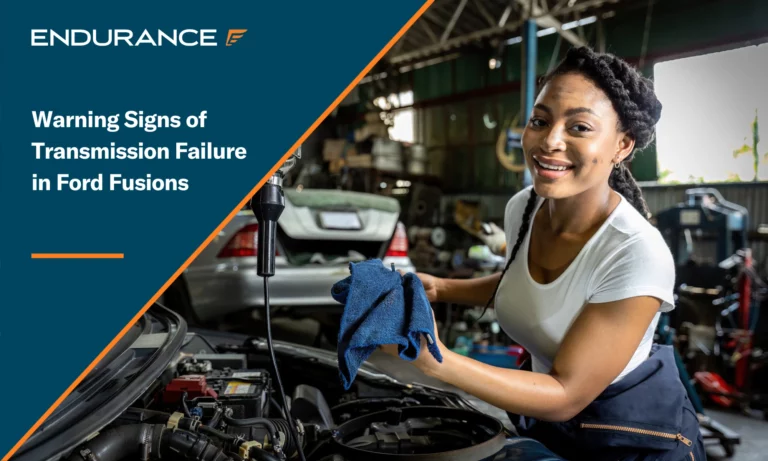Working from Home? Don’t Neglect Your Vehicle’s Health

Since the COVID-19 pandemic kept the world indoors, working from home has become a lot more common. Even now, plenty of workers who have started going back to the office don’t work there five days a week, and as a result, our trusty commuter cars spend a lot of their time sitting in garages or out on driveways.
If using your vehicle causes wear and tear, you’d be forgiven for thinking that not using it keeps it in good shape—but, unfortunately, that isn’t the case. Cars are designed to be driven regularly, so leaving yours stationary for extended periods can lead to a host of issues that will ultimately lead to breakdowns.
At the very least, you can expect to have to take it to the mechanic for a tune-up before you start using it again. Keep it well maintained, however, and you won’t have anything to worry about next time you hit the road.
Let’s take a look at what happens to your car when you don’t drive it and some easy car care and car maintenance tips you can carry out at home.
What Happens to Your Car When You Don’t Drive It?
Just like humans benefit from exercise, cars need to be driven at least semi-regularly. If they aren’t, they can start to deteriorate for a number of different reasons. Here are seven examples:
- It can damage the exterior: Bird droppings, tree sap, and even the sun can damage the exterior of your car if it’s left in one place for too long. Bird droppings consist of uric acids, which are not water-soluble and are acidic enough to burn through the clear coat if you don’t act quickly enough. Tree sap is incredibly sticky and difficult to remove. It can also be problematic for your paintwork, especially if the clear coat is already damaged.
- It can wreak havoc on your gas tank: Leaving your fuel tank near empty can cause moisture to build up inside it, which isn’t great for vehicle health. On the flip side, filling it to the brim means it may overflow if the gasoline expands during warmer weather. To make matters worse, gasoline goes bad after being unused for a long period of time.
- The battery loses its charge: Your battery doesn’t only run when you’re driving. Even when your vehicle is parked, it’s powering the computer within. If you have a phone charger or dash-cam plugged into the cigarette lighter, those will be slowly draining power too. Leave it too long, and it will run completely flat.
- Tires lose pressure: Tires can develop flat spots when you don’t drive due to the pressure of being in one place for an extended period. They also gradually lose pressure when they sit too (around one or two PSI per month).
- Fluids and oils go stale: There are plenty of important fluids in your car, and driving your vehicle regularly keeps them flowing. However, when a car sits for a long time, these fluids can pool and go stale, and then you’ll potentially be looking at a big car repair. Oil, in particular, can be a big issue, as this keeps the metal components lubricated. Stale oil doesn’t lubricate like fresh oil can, which can lead to component failure or engine overheating.
- Seals dry up: Air conditioning is crucial for staying comfortable on the road, but the seals can dry out when you don’t drive your car. This can lead to loss of freon, which will mean much hotter journeys until you can get things fixed.
- Ants move in: Chances are your car is full of discarded snacks, which are very attractive to pests. Being so tiny, ants are great at infiltrating unused vehicles and making them a home. It’s also recommended that you remove any running shoes or gym clothes. If you let them fester, they’ll leave a stench that will be difficult to get rid of.
5 Tips to Keep Your Car Healthy While You Work Remotely
To keep your car in good working condition, maintenance is key. There are some things you can quite easily do at home, while others may need the attention of a professional. Follow these suggestions, and you should be good to jump in and drive whenever the moment takes you.
1. Keep up with routine car maintenance.
You’ll find your manufacturer’s recommended maintenance in your owner’s manual, and this should be followed to the letter regardless of how often you use your vehicle. Any minor issues can become a major problem after long periods of sitting, but regular maintenance can help you catch things while they’re still easily fixed. If you have an extended car warranty, it’s important to remember that maintenance will be part of your contract, so keep it up to ensure your coverage stays valid.
2. Change the oil (and other fluids).
Car engine oil can go stale and sticky if it isn’t regularly running through your engine. Check the oil level and change it periodically even if you aren’t hitting the mile figures recommended by your manufacturer. A mechanic can do an oil change for you, but if you want to save some cash, you can change the oil yourself. First, you need to drain the old oil, change the filter, and then fill it with new oil. It may seem daunting if you’ve never done it before, but it’s relatively straightforward when you’ve done it a couple of times. Likewise, it’s sensible to check all your fluid levels regularly, from brake fluid to coolant, keep them topped up and get them changed at the recommended intervals.
3. Check the battery.
You won’t be going anywhere on a dead car battery. Check it every now and then to keep it good and healthy. Clean any corrosion that’s built up around the terminals if you spot some, and maybe have it tested at an auto shop just to be sure it’s doing okay. Going on a drive for 20 minutes every few days should help keep your battery charged. You can also connect it to a trickle charger whenever you aren’t planning on driving for a few weeks.
4. Check your tires.
Driving when your tires aren’t the correct PSI can be dangerous. In the worst-case scenario, it could even lead to a catastrophic blowout. Even if you aren’t going to be using your car anytime soon, check your tires with a tire pressure gauge and use a portable compressor to top them up if necessary. A quick spin around the block once a week can help you to avoid flat spots too. This applies to brand-new tires just as much as old tires.
5. Consider your gas tank.
It isn’t recommended that a sitting car have too much or too little gas in it, so aim for about half a tank if it’s going to be off the road for a while. When you want to drive again, fill up with fresh gas before you do, as this will mix with the old gas and make it usable again. You could also add an enzyme fuel stabilizer ahead of time to prevent the gas in your tank from going stale.
How to Safely Work on Your Car at Home
One huge benefit of working from home is that it gives you plenty of time to get things done. It’s the ideal opportunity to work on your car, but like any DIY project, you can never be too careful. Always make sure to take basic safety precautions before you pop the hood, like pulling on some gloves and goggles, ensuring you have the right tools for the job, and keeping a first aid kit nearby.
All parts you use to carry out any maintenance should be acquired directly from the vehicle manufacturer, dealership, or from a trusted auto shop. It may be tempting to purchase parts and supplies cheaply online, but it’s hugely important that whatever you use is high quality and (where components are concerned) manufacturer-approved. Sub-par auto products may save you money in the short term, but they can cause damage, leading to expensive repairs—even voiding any warranty coverage you might have purchased.
Remember: if it feels too big for you to tackle, it isn’t worth the risk. Extended warranty or vehicle service contract providers stipulate that any damage caused by unauthorized repairs or maintenance will not be covered as part of your plan, so make sure to enlist the help of a certified professional whenever you start to feel out of your depth. Better yet, check your warranty contract for specifics on the maintenance tasks you shouldn’t carry out yourself.
Your Top Choice for Extended Auto Protection
No matter how well you look after your vehicle, the fact is that all components fail eventually. When they do, it’s usually at the worst possible moment, stranding you at the roadside, miles away from home. Then, to add insult to injury, you may end up with a repair bill you can’t afford.
To protect themselves from the cost of unexpected component failure, drivers across America are investing in extended auto protection — and you should too. Endurance is rated by experts as the top provider in the country, and since opening our doors over 15 years ago, we’ve helped over half a million drivers save some serious money.
Whether you’re a daily commuter, rideshare driver, or luxury vehicle owner, we offer a wide range of coverage plans with unrivaled eligibility, affordability, and flexibility. All of our coverage plans can be customized to suit your specific needs and budget, with our lowest contract starting at just $99 per month.
We also offer some of the best-added benefits in the business, with 24/7 roadside assistance, trip-interruption costs, and replacement travel reimbursement included as standard. If that wasn’t enough, all new Endurance customers also get a year’s free access to our Elite perks package, adding on tire repair/replacement, total loss protection, key fob replacement, and more.
To find out what we can do for you and your vehicle, call our award-winning customer service team at (800) 253-8203 to request a FREE quote. In addition, you can explore our online store for an instant price preview and shop with confidence.
We also have plenty more helpful articles like this one over on our extended warranty blog, so head on if you’d like to do some more reading first.













Larry Witherspoon Jr. is a co-founder and Executive Director of the Automotive Training Center. Larry has held multiple leadership positions in the U. S. Navy and with various Fortune 100 companies. In addition to his business experience, Larry grew up understanding the difficulties all young men face becoming adults especially those that come from challenging circumstances. He has taken those experiences growing up and combined them with his passion for vehicles to start the Automotive Training Center. Read more about Larry.